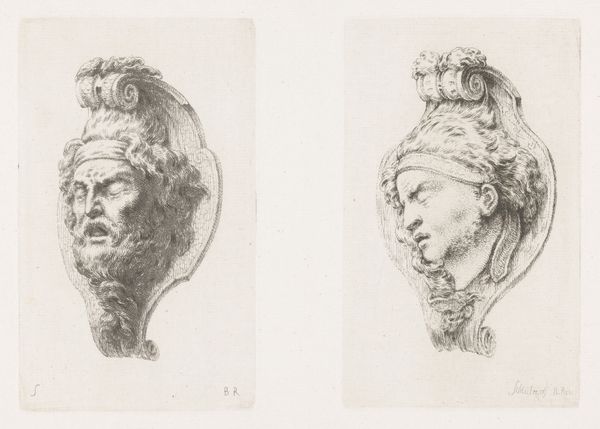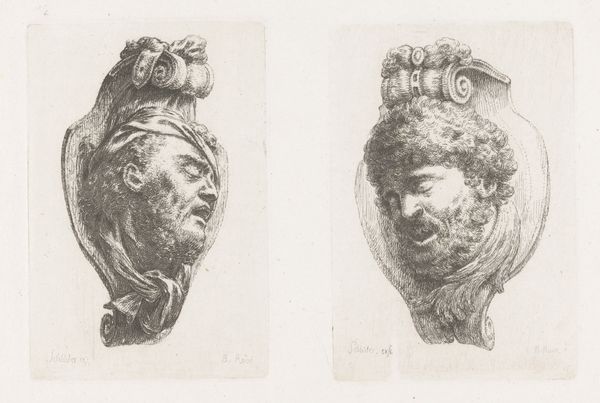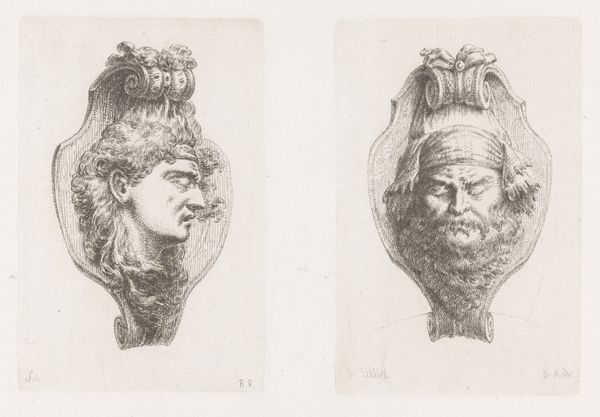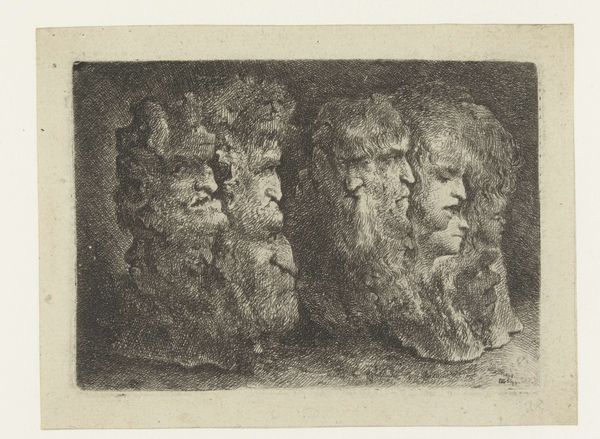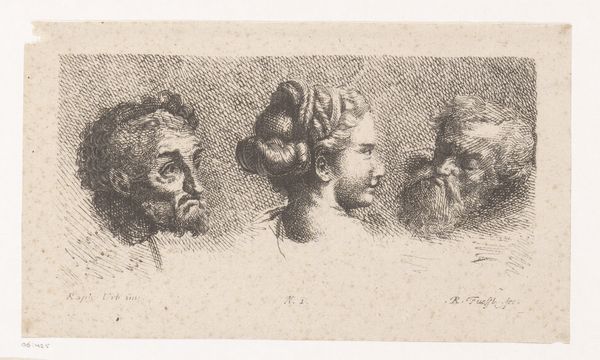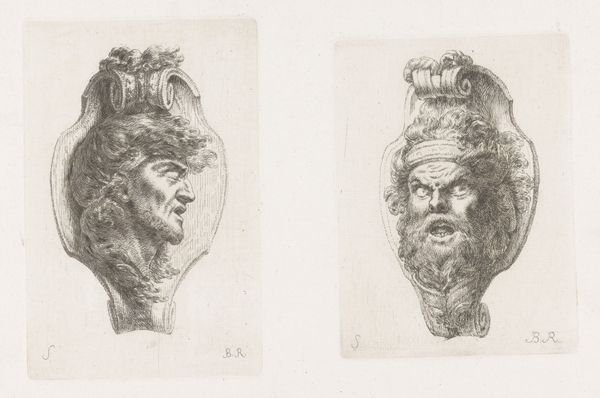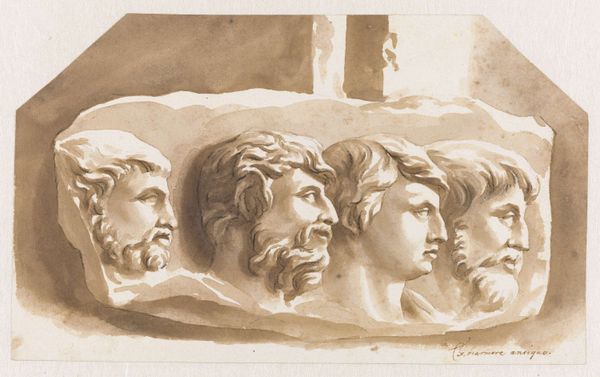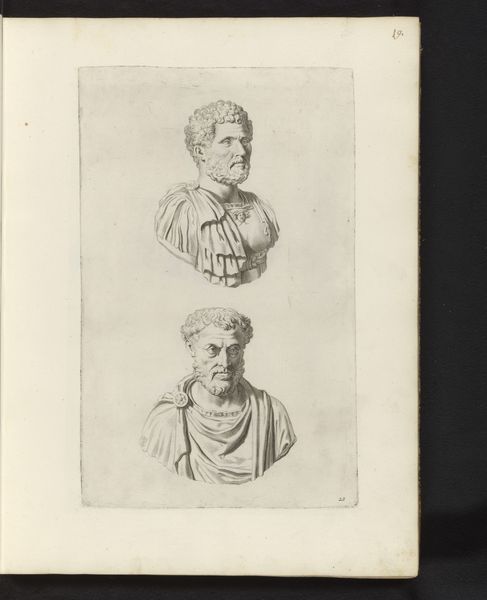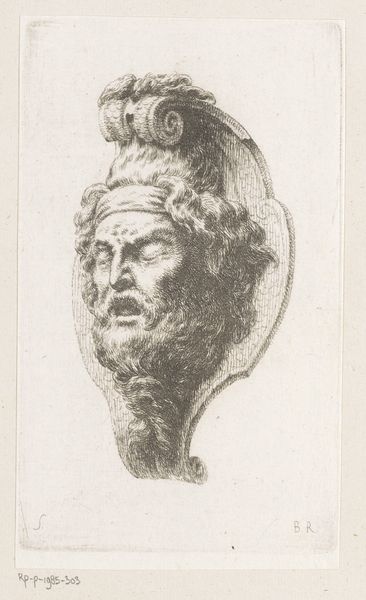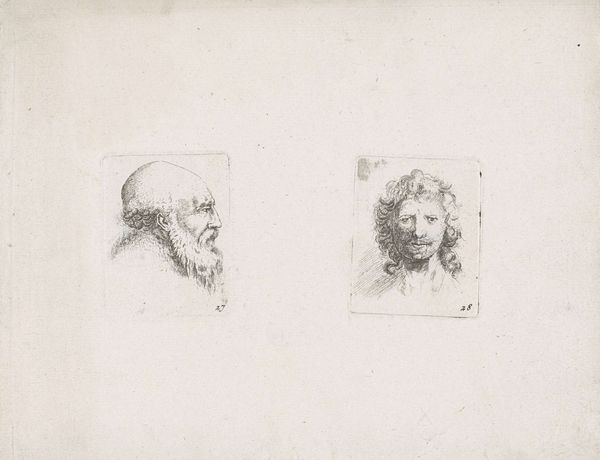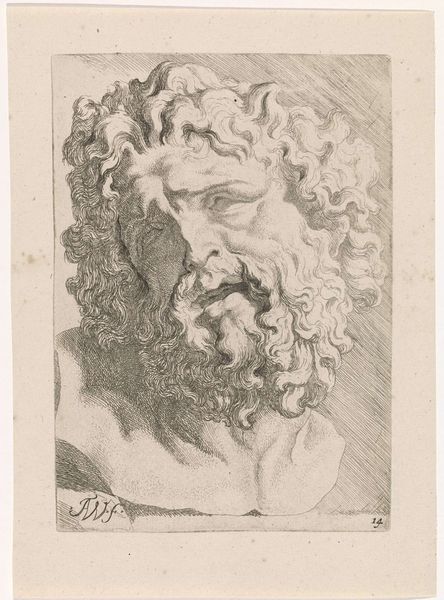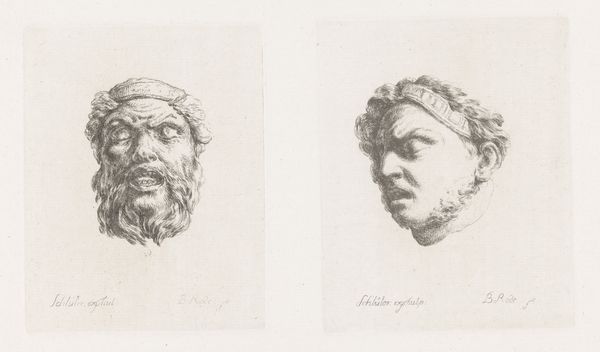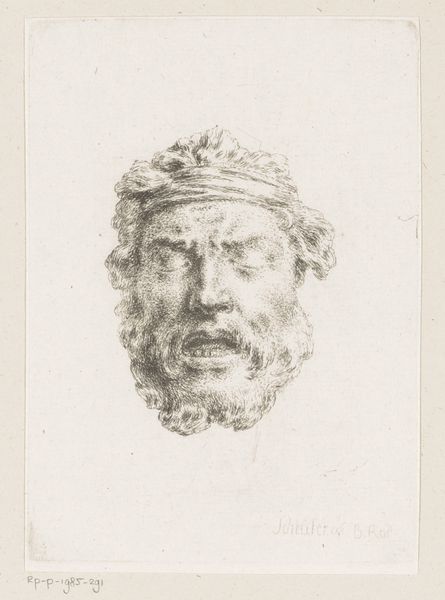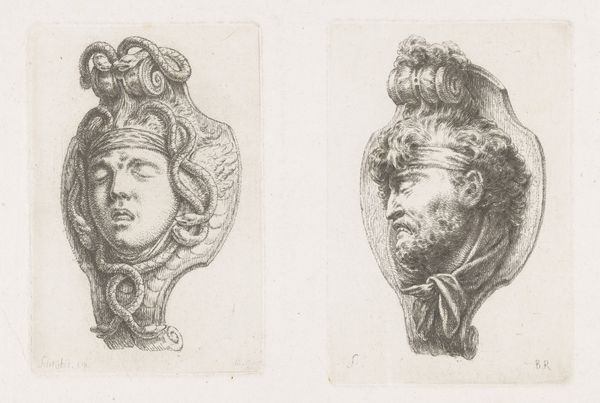
Twee hoofden van beelden van het theater van Tarente opgegraven in aanwezigheid van de kunstenaar 1778
0:00
0:00
louisducros
Rijksmuseum
drawing, paper, watercolor
#
portrait
#
drawing
#
neoclacissism
#
paper
#
watercolor
#
ancient-mediterranean
#
watercolour illustration
Dimensions: height 233 mm, width 330 mm
Copyright: Rijks Museum: Open Domain
Curator: This is a work by Louis Ducros, dating back to 1778. It's entitled "Two heads of statues from the theater of Taranto, unearthed in the presence of the artist" and done with watercolor on paper. Editor: There's something haunting about these two heads floating on the blank paper. The man on the left, with his beard and laurel wreath, appears regal yet forlorn, doesn't he? Curator: Indeed. Ducros captured these ancient busts during a period of heightened archaeological interest in Italy. It speaks to a broader cultural fascination with classical antiquity and its artistic traditions. It comes out of the Neoclassical movement in the late 18th century, fueled by archaeological finds. It was quite common to depict classical artifacts. Editor: Absolutely. The image evokes the allure and mystery of lost civilizations, and the heads appear almost ghostly, as if just emerging from the earth itself. Do the specific individuals represented in the statues carry any known symbolic weight, or tell us anything about the context? Curator: While we can't pinpoint exactly who these portraits depict, the head with the wreath suggests a king or even a god, perhaps Apollo or Zeus, given the Tarentine location. Their survival, even in fragments, reinforced the idea of the enduring legacy of the classical world and would've sparked great debate at the time. The location too—Magna Graecia and ancient power—really drives the art and the statement about classicism home. Editor: I see that continuity. And their isolated presentation emphasizes the preciousness of each archaeological find, doesn’t it? The contrast is so striking with that wide empty space, it's as if they were floating in an archive of collective memory. Curator: Precisely. Ducros wasn't simply creating a record; he was participating in the cultural work of recovering and interpreting the past, lending dignity through his artwork. It all demonstrates the intense engagement of artists and intellectuals with the physical remnants of classical culture. Editor: It's amazing how a simple watercolor sketch can transport us to another time, provoking us to consider both what's lost and what continues to resonate. Curator: Exactly, art becomes a way for history and symbolism to converge, enabling viewers to grapple with those tangible fragments of the distant past, which, in turn, still echo through time.
Comments
No comments
Be the first to comment and join the conversation on the ultimate creative platform.
